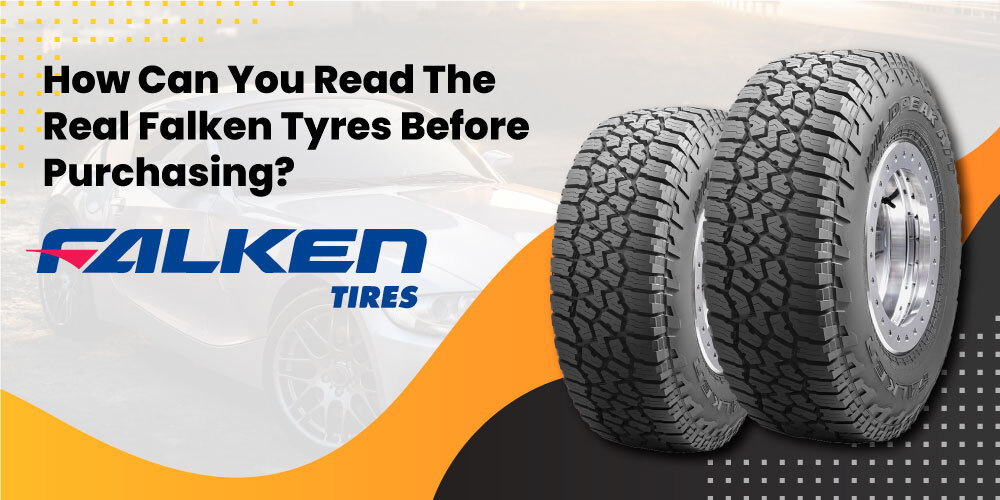
If you purchased a new automobile without modifications and want to take it to a dealer or tyre expert for new tyres, you do not need to be concerned with the exact specification of the new tyres. They likely already know which rim size, width, profile, and other ratings will work best for your vehicle, so you don't need to worry about them.
But what if you encounter a tyre dealer who isn't a tyre expert, and he installs the wrong tyre on your car without your awareness, and you drive your car for a while before seeing that it's impacting the performance of your vehicle? What will you do?
To travel effectively and safely, you must select the correct tyre size for your vehicle. And to do so, you must have a thorough understanding of tyre size and specs.
What relevance do tyre sizes have?
First, you should know that mismatched tyres might cause inaccurate speed measurements because your vehicle will perform at a lesser pace.
You may also face acceleration, control, and steering difficulties if you drive with incorrect tyres.
Those wishing to purchase new vehicle tyres online should ensure they have the correct wheels and tyres. Those who alter their automobiles with new wheels and tyres to improve their handling must be aware of tyre sizes to ensure legality and safety.
How to read tyre sizes?
Have you thoroughly inspected your car's tyres?
Your tyre's sidewall contains all pertinent information. On the sidewall are a sequence of numbers and letters. These figures represent the tyre's size, load capacity, and maximum speed; depending on the size and requirements of your vehicle, various types of tyres are available. Deciphering this code will illuminate our understanding of your vehicle's tyres. Understanding the parameters listed on the sidewall of your tyres will simplify and narrow the process of selecting the right tyres for your vehicle.
Some codes are simple to read, while others require numbered reference indices and adequate comprehension.
Several generic words
We will begin by discussing some of the most common terminology associated with tyres. Listed below are some of the most general terms:
Tread
The tread is the portion of a tyre that makes contact with the road. In wet conditions, the tread directs water away from the tyre to improve traction.
Bead
As it goes around the inside, this tyre section touches the rim on both sides. In conjunction with the tyre's air pressure, the wheels' slots prevent the beads from escaping.
Sidewall
At this point, on the tyre, tread and bead meet. The sidewall of your tyre contains all the necessary performance information.
Carcass
This is the essential structure of a tyre, and it absorbs up to 80% of the forces it encounters. Rubber-coated fibers are glued to the bead to maintain the tyre's form and strength.
What do the digits on the tyres indicate?
Here is an explanation of the numbers, which you may initially find confusing.
Take the FALKEN WILDPEAK AT3W 235/75R/15 109-T tyre, for example.
On the sidewall, there is printing.
1) Tyre Width - 235 indicates the tyre's width in millimeters as measured from sidewall to sidewall. Vehicle manufacturers standardize this width based on respective models. This aspect significantly impacts handling, traction, and fuel consumption when selecting new tyres.
2) Aspect Ratio - 75 indicates the tyre's aspect ratio, which is determined by dividing the section height by the width. This is the ratio of the tyre's cross-sectional height to its width. The sidewall of a tyre will be taller if the aspect ratio is more significant.
3) Construction - R represents radial plies. The letter that follows the aspect ratio identifies the construction of the tyre. The letter R denotes radial in this case. By examining the tyre's structure, we can better appreciate its features.
4) Wheel Diameter - 15 represents the diameter of the wheel rim. The diameter of the rim is measured in inches, not millimeters like the tyre's width. This measurement indicates what size rim the tyre is designed for.
5) Load Index – 109 indicates the maximum load and speed at which a tyre can run safely. Compared to tyres with a higher profile, tyres with a lower profile often have lower load ratings.
6) Speed rating - T denotes the speed rating, which is the highest service speed supported by the tyre. The speed rating indicates the highest speed that a tyre can endure.
Where can you locate the suitable tyre size for your vehicle?
Don’t worry, as we have the ideal solution for you.
EverTyres is the one-stop solution to offer reasonable and high-quality tyres, including a wide range of them at affordable prices. EverTyres is known for selling its tyres at wholesale prices without compromising on the quality. Over the years, the professionals have left no stone unturned in offering the most promising products and services.


